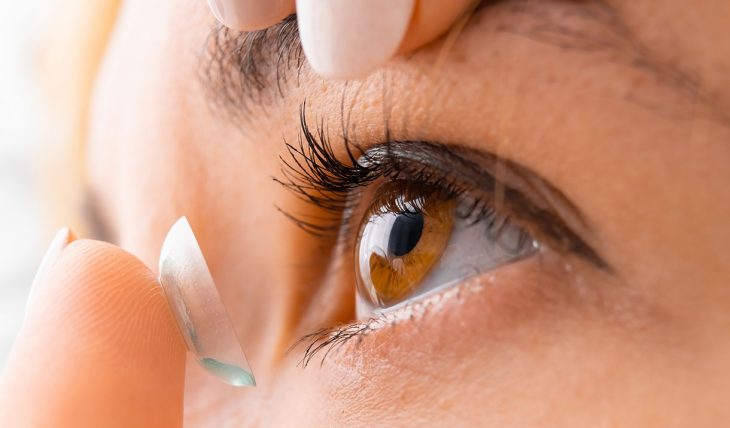What are the symptoms of Terrien marginal degeneration?
Terrien marginal degeneration is a rare, progressive condition affecting the cornea, the clear, dome-shaped surface covering the front of the eye. Symptoms of Terrien marginal degeneration can vary but typically include:
- Blurred Vision: As the condition progresses, it can lead to blurred or distorted vision due to changes in the shape of the cornea.
- Corneal Thinning: The condition causes thinning of the corneal tissue, particularly around the edges of the cornea. This thinning can be observed during a comprehensive eye exam.
- Visual Distortion: Patients may experience visual distortions or irregularities, as the cornea becomes progressively more misshapen.
- Sensitivity to Light: Increased sensitivity to light (photophobia) is a common symptom, where bright lights can cause discomfort or exacerbate vision issues.
- Eye Discomfort: Some individuals may experience mild discomfort or irritation in the eye, although this is less common.
- Astigmatism: The abnormal curvature of the cornea can lead to astigmatism, which causes vision problems due to the uneven shape of the cornea.
- Gradual Vision Loss: Over time, vision may deteriorate gradually as the cornea becomes more irregular.
Terrien marginal degeneration usually affects both eyes, although one eye may be more severely affected than the other. It typically begins in adulthood and progresses slowly. If you or someone you know is experiencing these symptoms, it’s important to consult an ophthalmologist for a thorough evaluation and diagnosis.
What are the causes of Terrien marginal degeneration?
The exact cause of Terrien marginal degeneration is not well understood, but several factors and theories may contribute to its development:
- Genetic Factors: Some evidence suggests a genetic predisposition to Terrien marginal degeneration, though no specific genes have been conclusively linked to the condition. It might occur more frequently in certain families.
- Autoimmune Factors: There is speculation that autoimmune mechanisms might play a role in the development of Terrien marginal degeneration. In some cases, it may be associated with other autoimmune conditions, but this link is not well established.
- Corneal Tissue Changes: Abnormalities in the corneal tissue, such as excessive thinning and degeneration at the corneal margins, are central to the condition. However, the exact mechanisms leading to these changes are not fully understood.
- Inflammatory Processes: Chronic inflammation or inflammatory responses in the cornea might contribute to the degeneration seen in Terrien marginal degeneration, although this is not definitively proven.
- Environmental Factors: Although less clear, environmental factors, such as exposure to certain chemicals or prolonged UV exposure, might contribute to corneal degeneration in some cases.
- Age-Related Changes: Terrien marginal degeneration often begins in adulthood, suggesting that age-related changes might be a contributing factor, but it is not considered a typical age-related condition.
Terrien marginal degeneration is a rare and complex condition, and more research is needed to fully understand its causes and mechanisms. If you have concerns or symptoms suggestive of this condition, consulting an ophthalmologist for a detailed examination and evaluation is crucial.
What is the treatment for Terrien marginal degeneration?
Treatment for Terrien marginal degeneration focuses on managing symptoms and preserving vision. Since there is no cure for the condition, the treatment plan typically includes:
- Eyeglasses or Contact Lenses: Prescription lenses can help correct vision problems caused by irregular corneal curvature and astigmatism. Specialized contact lenses, such as rigid gas permeable (RGP) lenses or scleral lenses, may be recommended to provide better vision correction and comfort.
- Corneal Transplant: In advanced cases where significant vision impairment occurs and other treatments are ineffective, a corneal transplant (keratoplasty) might be considered. This involves replacing the damaged cornea with a healthy donor cornea to restore vision.
- Surgical Options: Other surgical procedures, such as phototherapeutic keratectomy (PTK), might be used to remove the damaged corneal tissue and improve vision. However, these procedures are less commonly performed for Terrien marginal degeneration compared to corneal transplants.
- Monitoring and Follow-Up: Regular eye examinations are essential to monitor the progression of the condition and adjust treatment as needed. An ophthalmologist will track changes in the cornea and vision to determine the appropriate course of action.
- Management of Symptoms: If the condition causes discomfort or sensitivity to light, treatments such as lubricating eye drops or other measures to manage dryness and irritation may be recommended.
- Addressing Underlying Issues: While not always applicable, addressing any underlying conditions or contributing factors, such as autoimmune disorders or chronic inflammation, might help manage the overall health of the eye.
Treatment plans are personalized based on the severity of the condition, the impact on vision, and the overall health of the patient. Consulting with an ophthalmologist who specializes in corneal disorders is crucial for developing an effective treatment strategy.

Leave a Reply
You must be logged in to post a comment.